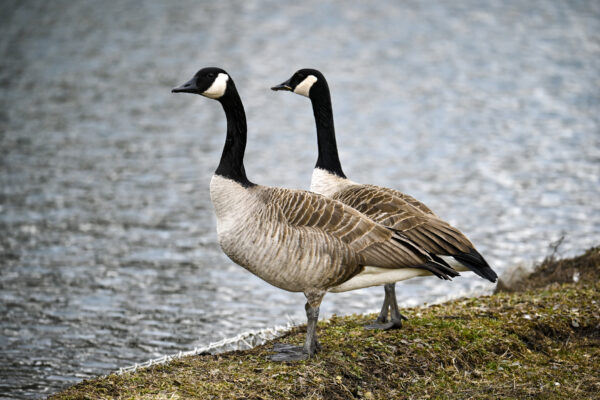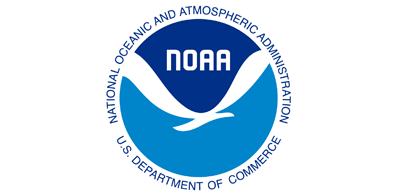Resident Canada Goose, Canada Goose (Branta canadensis)

Downloadable version coming soon!
Species at a Glance
The Canada Goose, also called the “honker” is the most abundant of all North American species of geese, with scientists estimating about 1 million in the Atlantic flyway population. Unlike its migratory cousin, the Resident Canada Goose nests and resides predominantly in the United States and has become a problematic permanent resident in suburban and urban communities.
Species Description
The Canada Goose is a large water bird weighing up to 18 lbs (8 kg). It has a long neck, large body, large, webbed feet, and a wide flat bill. Both sexes have a black head and neck with broad white cheek patches that extend from the throat to the rear of the eye. The breast, abdomen, and flanks are light gray to a dark chocolate brown. The back and tail are usually dark brown to black with a white “U”-shaped band on the rump. They are often seen flying in V-shaped flocks.
Native & Introduced Ranges
Ancestors of the Resident Canada Goose used the Atlantic flyway to migrate from breeding grounds in Canada to wintering areas in the South. Individual geese began to take up residence along the way, extending their range throughout most of the United States and Canada. Strong reproducing populations exist throughout Pennsylvania.
Biology & Spread
The Canada Goose is very mobile and can easily spread as it is willing and able to fly great distances to find food and nesting areas. By the early 1900s, it was nearly hunted to extinction, with no reports of nesting pairs in Pennsylvania before 1935. However, the Migratory Bird Treaty Act created protection for geese, and intensive relocation programs helped repopulate historic habitats. In the United States, breeding rates are higher than in Canada because there are less adverse weather conditions, such as late spring snowstorms, that could impact nesting.
Habitat
There are a variety of habitats that are suitable for the Canada Goose, especially those that offer a wide-open view, such as islands in rivers and lakes, marshes, reservoirs, artificial nesting structures, golf courses, and grassy fields near water.
Impacts
Threat to Biodiversity
The Canada Goose grazes on wild and cultivated plants, damaging rhizomes, roots, shoots, stems, leaf blades, and seeds. Grazing and trampling on native vegetation damages delicate wetland habitats and restoration sites. In addition, goose droppings can harm water quality by adding excessive nutrients to a water body and causing algal blooms.
Economic Costs
Complaints of the Resident Canada Goose usually involve the accumulation of feces on lawns, walkways, private residences, schools, public parks, and other residential areas, which can damage property and reduce the aesthetic appeal of recreational use areas. The Canada Goose can also cause severe agricultural damage as it feeds on cultivated crops like corn and wheat, reducing yield and increasing erosion. In addition, this large waterfowl species poses flight safety hazards at airports where bird-aircraft strikes have occurred resulting in injuries, financial losses, and even loss of human life.
Health Risks
Goose feces in residential areas pose serious health threats due to the presence of disease-causing organisms. Furthermore, goose aggression, especially during the nesting season, has been known to cause human injury.
Prevention & Control
Once established in an area, the Resident Canada Goose is very persistent and difficult to manage. There are several methods that may deter it, including modifying habitat with unpalatable vegetation, allowing grass to grow tall to create a visual barrier between feeding areas and water, and installing low fences to create barriers. Low fence barriers are effective at keeping the Canada Goose from lawns, particularly during summer months when it has molted and is unable to fly. Additional deterrents include loud noises, goose chasing dogs, or scare tactics such as helium ballons, or scarecrows. However, these tactics may become obsolete as it can become accustomed to repetitious methods, particularly when it realizes there is no danger.
References
Connecticut Department of Energy and Environmental Protection. 1997. Canada Goose (Branta Canadensis). Factsheet. < http://www.ct.gov/dep/cwp/view.asp?A=2723&Q=325984>.
USDA APHIS. 2003. Managing Canada Goose Damage. Fact Sheet. < http://www.aphis.usda.gov/ws/statereports/NJ/cagonj021303.pdf>.
Fergus. C. Canada Goose. Pennsylvania Game Commission Wildlife Notes. < http://www.pserie.psu.edu/seagrant/ais/images/canadagoose.pdf>.



